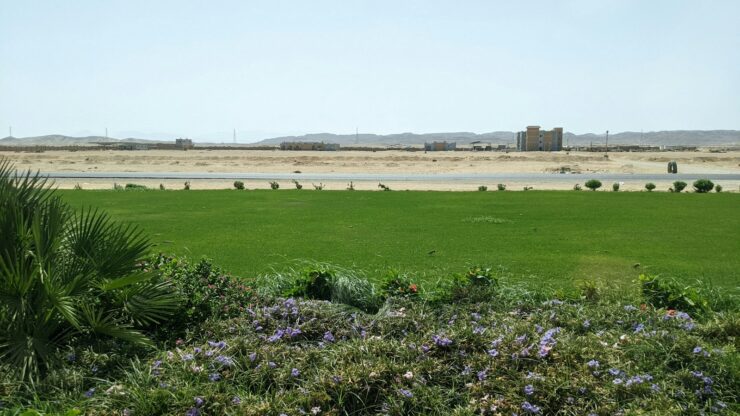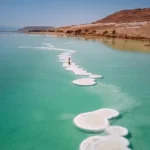Recent satellite imagery brings an astonishing picture of change in the Sahara Desert—one of the driest regions on earth. Following huge sections of intense rain, vast portions of this arid landscape have turned green, with pockets of foliage bursting into areas that are normally as barren as moonscapes. This is not a blip in the continuum; it is part of larger changes due to climatic variability and global warming.
Dramatic Landscape Alteration
A raider extratropical cyclone tramped through the northwest coast of Africa on September 7-8, 2024, bringing unprecedented waterfalls to areas such as Morocco, Algeria, and Tunisia—regions known for their extremely low frequency of rains. Images captured by NASA’s Moderate Resolution Imaging Spectroradiometer (MODIS) speak for themselves, comparing the dryness of the August landscape with the recent vibrancy of greens in just a matter of days.
Though this trend of fast growth of plants after heavy precipitation is not new to the Sahara, historically, it was considered a very verdant place with many lakes and greenery-rich sceneries harboring numerous wildlife species. These vegetative conditions emerged from 11,000 to 5,000 years ago when the climate was much more friendly for plant development.
What are currently blamed for the sudden shocks of greenery are the changed climate dynamics, particularly the northward movement of the Intertropical Convergence Zone, a tropical rain belt that moves seasonally and plays a key role in determining rainfall patterns across West Africa.
Climate Dynamics in Play
The ITCZ is an entity near the equator, and it moves seasonally as the Earth and the sun tilt. During the summer months of the Northern Hemisphere, it moves north; it retreats south during the warm months in the Southern Hemisphere. However, climate change has modified these patterns, pushing the ITCZ further north than its traditional path.
According to Karsten Haustein, climate researcher at Leipzig University, with the continued warming of the world, models predict that this boundary will continue shifting northward.
For instance, there were unprecedentedly high levels of rainfall in parts of the Sahara due to this year’s movement of the ITCZ:
- Regions now average two to six times wetter than during a normal year.
- Areas that have seen the highest increases include southern Chad, southern Sudan, and parts of Mali and Niger.
- These downpours have filled previously dry lakes, crucial to local ecosystems and human communities.
The Immediate Impact: Flooding and Human Displacement
Indeed, Sahara’s greening may appear as an upbeat development, but it carries with it a much grimmer reality: the extreme rains have resulted in disastrous floods placing millions at risk. The World Food Programme states that around 4 million people in 14 African countries are at risk because of flooding, with over 1,000 flooding events reported in Chad, Nigeria, Mali, and Niger resulting in deaths.
Besides the direct threat to human life, these floods endanger infrastructure, displace communities, and strain resources. In most cases, this is coupled with worsening conditions in dry regions due to changes in the rainbelt, making populations reliant on steady weather conditions even more vulnerable.
Climate Change: The Underlying Driver
Many interactions occur between the northward shift of the ITCZ and global climate change. Features like the passage from El Niño to La Niña significantly influence the development of these patterns. If the equatorial Pacific’s oceans are warmer than average during El Niño, it often leads to drier conditions in West and Central Africa, while La Niña brings drier conditions.
Additionally, record ocean temperatures in the northern Atlantic are allowing the rainfall patterns of equatorial regions to spread north into the Sahara. This transformation signifies not only a local environmental shift but also a wider change in the global weather system patterns.
The Wider Implication of the Greening of the Sahara
The impacts of this greening extend far beyond the regions directly affected. Some global implications include:
- Disruption of Agricultural Systems: Areas reliant on seasonal rains may face floods or droughts, threatening food security.
- Health Risks: Increased rainfall raises the likelihood of mosquito-borne diseases like malaria and dengue fever.
- Geopolitical Tensions: Droughts and floods can intensify competition for resources between bordering countries.
- Effects on Weather Patterns: The ITCZ’s northward shift has already disrupted tropical Atlantic activity, leading to fewer storms but potentially more destructive weather patterns.
- Future Predictions: Experts predict that climate change may shift the ITCZ southward in the coming centuries, leading to further changes in global weather patterns.
This unusual greening of the Sahara Desert serves as a crucial reminder of our interconnected world. While the emergence of lush greenery in a long-barren land may seem positive, it conceals complex and often disastrous changes driven by climate change. Greater predictability and preparation for increasingly disturbed weather patterns will be essential in adapting to our changing climate.
© RATHBIOTACLAN



















